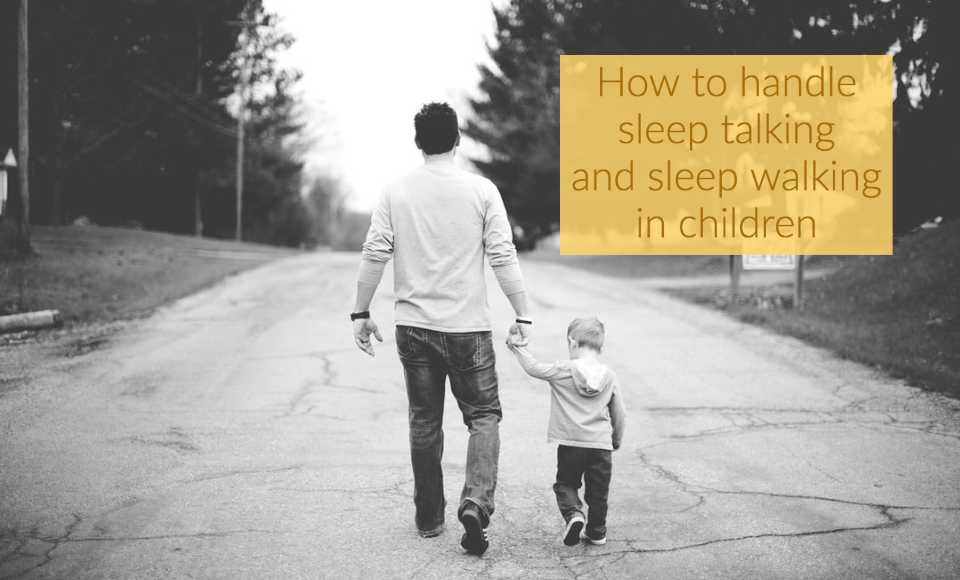Sleep talking and sleepwalking are a part of a sleep disorder called Parasomnia. However, children talking and walking in their sleep is not considered to be a serious sleep disorder, nor is it considered to be the result of a physical or psychological problem. But both can occur when a child has been asleep for one to three hours. Here is a little more information on sleep talking and sleepwalking in children, to maybe give one a better idea of how to handle it.
For children, sleep talking actually occurs more than sleepwalking. But sleep talking and sleepwalking can also happen together. Children may experience one or more types of Parasomnia, as it does run in some families.
When handling sleep talking and sleepwalking in children, parents and guardians should be concerned with their little one’s safety. When the child is sleepwalking, they are not capable of the judgment they would have when they are awake. In addition, they do not make much noise when sleepwalking, which can make it difficult to know when the child is sleepwalking or not. This makes it harder to protect them when sleepwalking. Here are a few sleepwalking safety tips to keep in mind for your child.
- Be prepared. If you know your child is a sleepwalker, then you need to be prepared, because anything can happen.
- Check your child’s room for any safety hazards. If your child is a sleepwalker, then it is probably not a good idea to have them sleeping in a bunk bed or any kind of bed that is high off of the floor. Everything should be picked up and put away before bedtime, this includes toys, shoes, school supplies, and anything else that has any potential of hurting your child. Put outlet covers on any empty electrical sockets and be sure to keep the windows closed and locked.
- Keep the bedroom door locked, so that your child does not wander around the house. It might be a good idea to have the lock on the outside of the door so your child cannot unlock the door and get out.
- Get a monitor so you can hear what is going on during the night, whether it is an auditory or visual monitor, it will help you know if your child needs you.
- On the chance that your child does end up wandering around the house, it may be a good idea to keep an alarm system for the doors and windows. You can even look into getting a bed alarm system to use by the child’s bed. (This may include a bed pad that you put under the sheet which will alarm if the child gets out of bed, or a pressure sensor pad that can be placed on the floor that will alarm if the child steps on it.) This way, you can be aware that your child is walking in his or her sleep.
By the time your child hits their adolescence, the sleepwalking should reduce or stop. So this will not be a huge cause of concern as long as the proper safety precautions are taken.
Now sleep talking is a more common Parasomnia. Some children may be speak clearly in their sleep while other may mumble or make noises. If children are simply talking, it may be best to just leave them alone, as this episode will end shortly. However, if the child is speaking loudly and sounds upset or scared, then it is a good idea for parents to try and comfort their children without waking them (however, if it is from a nightmare, parents may end up waking their children up).
Sleep talking and sleepwalking is not uncommon among children. Many children do one or the other, or both. As long as you know how to keep your child safe and handle it, you and your child can get through this period smoothly.
Sources:

